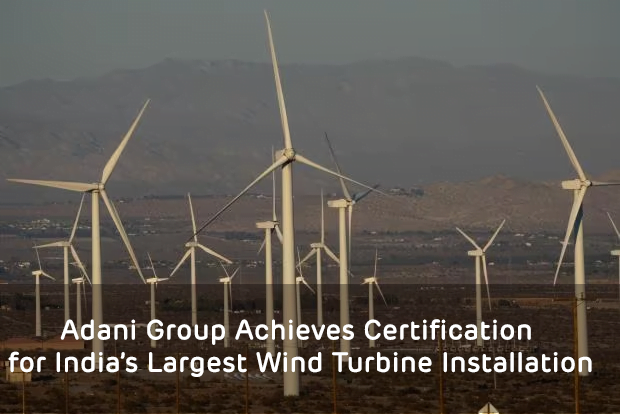The Adani Group, an Indian conglomerate, recently made headlines for its tremendous work in the energy sector. Its outstanding contribution to Bangladesh’s access to power has been one of the most notable achievements of its global presence. Adani, a rising star in the electricity supply sector, has made significant strides towards meeting Bangladesh’s expanding energy needs and deepening bilateral relations.
The Adani Group has developed a portfolio of world-class transportation and utilities infrastructure throughout India. Its headquarters is in Ahmedabad, a state in India.
With a focus on big-scale infrastructure development in India and O&M procedures benchmarked to international norms, the Adani Group has established itself as an industry leader in its transportation logistics and energy utility portfolio sectors. It is India’s sole Infrastructure investment-grade provider and has four IG-rated companies.
Adani owes its achievements and position as a market pioneer to its basic “nation-building” philosophy, which is backed by “Growth with Goodness”, a tenet for sustainable development. By readjusting its companies with a focus on climate protection and growing community involvement through its CSR programmes, Adani is committed to uplifting its ESG impact. These principles are sustainability, diversity, and shared values.
The energy division of the group, Adani Power, has grown to be a prominent force in Indian and international markets for generating and delivering electricity.
Bangladesh, a South Asian nation with a large population, has witnessed notable economic progress in recent times. Energy demand increased due to this growth, which Bangladesh attempted to address through domestic and foreign investments.
By 2040, Bangladesh’s economy, according to the Boston Consulting Group, will be worth USD 1 trillion. Bangladesh is one of the top three nations in the world for exporting ready-made clothing, and the World Bank praised the nation for its solid record of growth and development.
According to a study, Bangladesh has a solar power potential of 50,174 megawatts, or over 80% of the nation’s expected 60,000-megawatt energy consumption in 2041. Bangladesh may lessen its dependency on imported fossil fuels and improve its balance of payments by generating 80% of electricity from renewable sources.
The Bangladeshi government is seeking agreements with foreign energy corporations to meet this demand and offer a steady electricity supply.
According to the terms of the agreement with Bangladesh’s power board, Adani built a plant in Jharkhand’s Godda district. It will provide Bangladesh with electricity for 25 years, the Dhaka Tribune stated, adding that Bangladesh and Adani Power signed the contract in 2017.
Adani has played a crucial role in helping Bangladesh meet its rising electrical demand. A sizable portion of its energy needs are satisfied by Adani’s 1,600 MW coal-based plant, which offers a large everyday supply of 1,200 to 1,400 MW. The Bangladesh Power Development Board (BPDB), the company’s largest single customer, can buy a maximum of 1,496 MW of electricity from Adani.
Compared to the aforementioned, Bangladesh will receive power from the Adani project at a cost of Tk 15–16 per unit, according to a report in the Dhaka Tribune. This plant will be devoted to Bangladesh for 25 years and barely a kilowatt of electricity from it may be distributed elsewhere without Bangladesh’s authorization.
Bangladesh has been struggling in recent years to meet its ever-growing need for power, which has reached 14,000-14,500 megawatts per day. Adani Electricity Limited, an essential participant in Bangladesh’s energy scene, presently provides a sizable portion of its electricity needs. Although Adani plays a significant part in meeting the nation’s energy needs, rising unpaid electric bills have raised questions.
Bangladesh began receiving energy from Adani in March, with commercial production beginning in April and the second unit being commissioned in July.
Bangladesh will receive 1,496 MW as per the deal with Adani Power.
A further 1,160 MW are imported from India following the Joint Technical Working Group (JTUG) agreement. As a result, around 20% of Bangladesh’s current electrical needs are satisfied by imports from India.
The Dhaka Tribune noted that contrary to common belief, the Adani contract offers power to Bangladesh at a significantly lower cost than any other coal-fired plant, adding that the arrangement is favourable for Bangladesh.
The Adani deal represents an essential strategic alliance for Bangladesh’s energy industry. While unpaid electricity bills have caused some anxiety, they shouldn’t obscure Adani’s crucial contributions to managing the nation’s rising energy needs. Adani’s infrastructural investments, dedication to renewable energy, and the consistency of power supply have all been crucial in accelerating Bangladesh’s economic expansion.
Additionally, this partnership fortifies diplomatic ties between India and Bangladesh and strengthens the energy landscape. Adani’s involvement in Bangladesh’s energy industry sets an excellent precedent for corporate citizenship on a global level at a time when ethical and environmentally friendly energy solutions are of the utmost importance.








